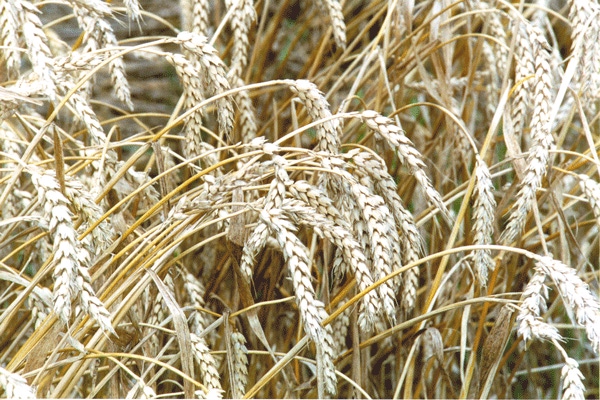
A lack of wheat seed, combined with high prices and good planting conditions, has left many Southeast growers wondering what to plant to generate badly needed operating capital for the 2011 crop. One option is barley, which is in demand by the newly operational Osage Bio ethanol plant in Hopewell, Va.
September 16, 2010

Southeast growers who lost their corn crop, and are concerned about the negative effects of heat and drought on other crops, want to plant wheat. The problem is — no wheat seed in some cases —and no preferred varieties in most cases
Plenty of corn growers in the upper Southeast harvested their corn early — not by choice. Hot, dry weather devastated corn, leaving many growers with no option, but to harvest what they could and file for crop insurance to avoid disaster.
Many of those growers, needing a cash fix prior to 2011 spring planting turned to wheat — or wanted to. In many cases the seed simply wasn’t there. Getting a preferred variety for growers waiting until June or July to buy seed was virtually impossible.
North Carolina State University corn specialist Ronnie Heiniger says he was inundated by calls from corn growers looking for a source of wheat seed. “It seemed everyone in eastern North Carolina sold out of seed early, then we looked in other areas, Arkansas is one usually good source that is compatible with our growing conditions, and they didn’t have any seed either,” Heiniger says.
The shortage in wheat seed should have been expected, but not at the levels which have occurred across the Southeast this past spring and summer.
As most things in agriculture do — wheat seed shortages — most of them — go back to weather. Record rainfall and snowfall across most of the Southeast in November through March, accompanied by record and extended low temperatures knocked out as much as 50 percent of acreage in some areas in the upper Southeast.
Spring harvest revealed another problem — lack of yield. Wheat that was planted early and survived record fall rainfall and record cold temperatures in December and January simply didn’t yield well.
Formed a perfect storm
Combine the weather with an already dismal outlook for wheat production in the U.S. and the meteorological and economical factors blended together for a perfect storm that leaves many Southeastern farmers scurrying to find wheat seed — of any kind.
Seed, greed and need are all part of the reason for wheat seed shortages this year. Seed because there simply is none to be found in some areas of the country.
Greed is a factor because growers and investors see the dollar or more basis differential between 2010 and 2011 wheat prices. Wheat at $6.50-$7.00 a bushel is comparable or better in value to most any crop grown in the Southeast.
Need is a big factor because drought plagued Southeast farmers need an influx of working capital to make it to the 2011 planting season.
Heiniger, who in addition to being a corn specialist is a highly regarded weather guru by many farmers in North Carolina, says the shortage of wheat seed couldn’t have come at a worse time from a weather standpoint.
“We are likely to see a break in high summer temperatures and widespread drought conditions at about the time most of our farmers plant wheat. Not only are they likely to have good planting conditions, but they are likely to have a long window of opportunity to plant wheat.
In addition, the long-range forecast looks good for a relatively mild winter and ample rainfall, so conditions couldn’t get much better from a weather standpoint for farmers to grow wheat,” Heiniger says.
Though saddened that so many farmers lost their corn crop and can’t find wheat seed, Craig Shealey, president and CEO of Osage Bio, says they do have a good option — barley.
Osage Bio recently began making ethanol from barley at their new plant in Hopewell, Va., the first of its kind east of the Mississippi River. The company buys barley through their business partner Perdue Agri-Business and recently increased the price they pay for barley to 80 percent of July 2011 corn futures. In mid-August the price for barley paid on delivery to the Hopewell plant was $3.50 per bushel.
“The bad weather has created a great opportunity for Virginia, Maryland and North Carolina farmers to try barley. There is a good supply of barley seed via Southern States and other seed outlets. There is plenty of nitrogen leftover from corn and the long-range weather forecast looks promising,” Shealey says.
The strong price showing of soybeans also bodes well for increasing barley acreage. Barley has proven to be a good double-crop partner with beans in the upper Southeast in the past few years. It matures earlier than wheat, allowing growers to get soybeans planted earlier and get yield benefits from the timely planting.
Growing wheat in 2010-2011 in the Southeast will likely be a great deal easier than planting it, simply because of the lack of seed. There is some concern that saved wheat, both legal and illegal, will be planted to make up for the shortage.
The fall seed shortage will play out through the winter and spring before the real effects of this shortage will be visible.
About the Author(s)
You May Also Like





